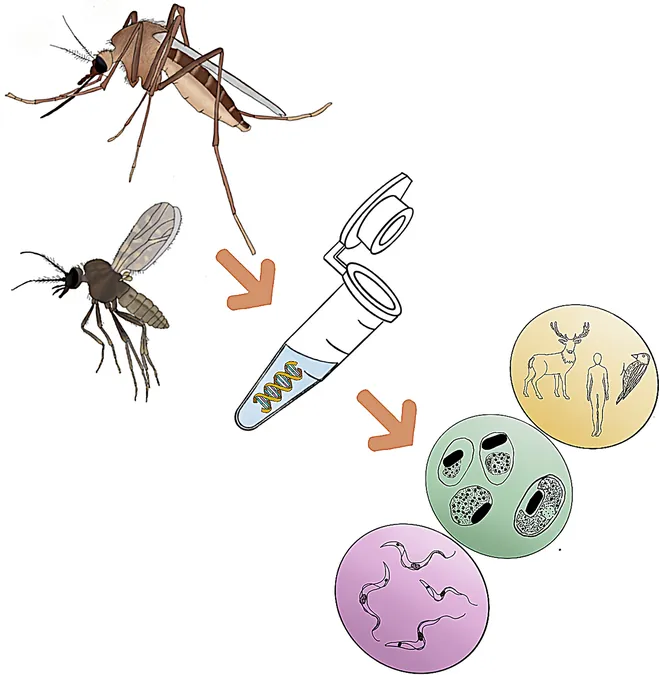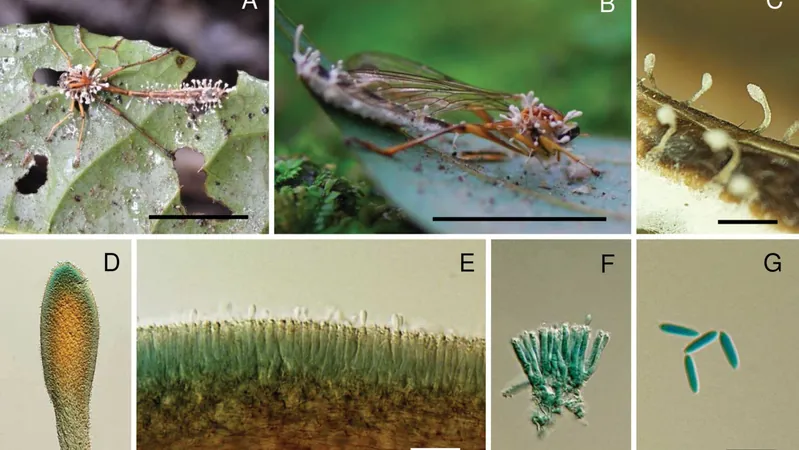
Unlocking Insect Feeding Secrets: How Blood Meal Analysis and Parasite Detection Illuminate Host Patterns
2025-07-20
Author: Jacques
Revolutionary Insights in Insect Feeding Behavior
A groundbreaking study exploring insect feeding patterns has emerged, utilizing the powerful combination of blood meal analysis and parasite detection. By examining various collection sites across Czechia—specifically Choteč, Zeměchy, and Milovice forest—researchers have painted a vivid picture of the ecological dynamics at play.
Where the Bugs Come Alive
Insect collection was conducted in diverse habitats from the dry shrublands of Choteč to the vibrant reed beds of Zeměchy, and onto the deer-rich Milovice forest, each location offering unique ecological features. The study's innovative trapping methods captured haematophagous (blood-feeding) insects over multiple years, utilizing CDC light traps paired with dry ice to attract these nocturnal feeders.
A Deep Dive into Identifying Mosquitoes and Midges
Researchers were able to identify trapped insects down to the last detail, dissecting their guts for the telltale signs of parasites, and employing advanced genetic techniques to bar-code specimens. They focused on each mosquito's blood meals, unraveling intricate host relationships and parasite distributions through lab-based investigations.
Unearthing Host Feeding Patterns
Out of the 281 blood-engorged mosquitoes captured, a staggering 66% yielded valuable barcoded information. Notably, deer blood emerged as the most common, followed by the identification of blood from a variety of creatures—from sheep to humans. Culex pipiens, a significant mosquito species, showcased a remarkable culinary range, feeding on avian, mammalian, and even amphibian hosts.
Secrets of Parasite Prevalence Revealed
The study further illuminated the prevalence of parasites among these insects. An extensive analysis uncovered multiple lineages of Plasmodium, with Culex pipiens acting as a primary vector for avian malaria across various habitats. The interplay between host feeding behavior and parasite distribution conveys vital implications for understanding disease transmission.
A Comparative Approach: Blood Meal vs. Parasite Detection
The findings revealed the strengths of combining both blood meal identification and parasite detection. Blood barcoding offered precise host information, while parasite detection highlighted long-term infection trends, showcasing how methodologies can yield contrasting yet complementary insights. For instance, Culex mosquitoes exhibited a propensity for avian blood but were also shown to harbor mammalian parasites.
Seasonal Trends and Ecological Implications
As seasons changed, so did the prevalence of detected parasites, suggesting intricate ecological connections. Various factors, including temperature and rainfall, likely influenced these trends, reflecting the dynamic nature of host-pathogen interactions.
Looking Ahead: The Future of Insect Research
This pioneering study sets the stage for further investigations into insect feeding behavior and disease vector dynamics. By leveraging advanced molecular techniques, researchers aspire to refine our understanding of ecological interactions and their implications for public health. The blend of blood meal analysis with parasite detection goes beyond simply unlocking the mysteries of insect diets—it significantly contributes to safeguarding human health by identifying potential transmission pathways.









 Brasil (PT)
Brasil (PT)
 Canada (EN)
Canada (EN)
 Chile (ES)
Chile (ES)
 Česko (CS)
Česko (CS)
 대한민국 (KO)
대한민국 (KO)
 España (ES)
España (ES)
 France (FR)
France (FR)
 Hong Kong (EN)
Hong Kong (EN)
 Italia (IT)
Italia (IT)
 日本 (JA)
日本 (JA)
 Magyarország (HU)
Magyarország (HU)
 Norge (NO)
Norge (NO)
 Polska (PL)
Polska (PL)
 Schweiz (DE)
Schweiz (DE)
 Singapore (EN)
Singapore (EN)
 Sverige (SV)
Sverige (SV)
 Suomi (FI)
Suomi (FI)
 Türkiye (TR)
Türkiye (TR)
 الإمارات العربية المتحدة (AR)
الإمارات العربية المتحدة (AR)